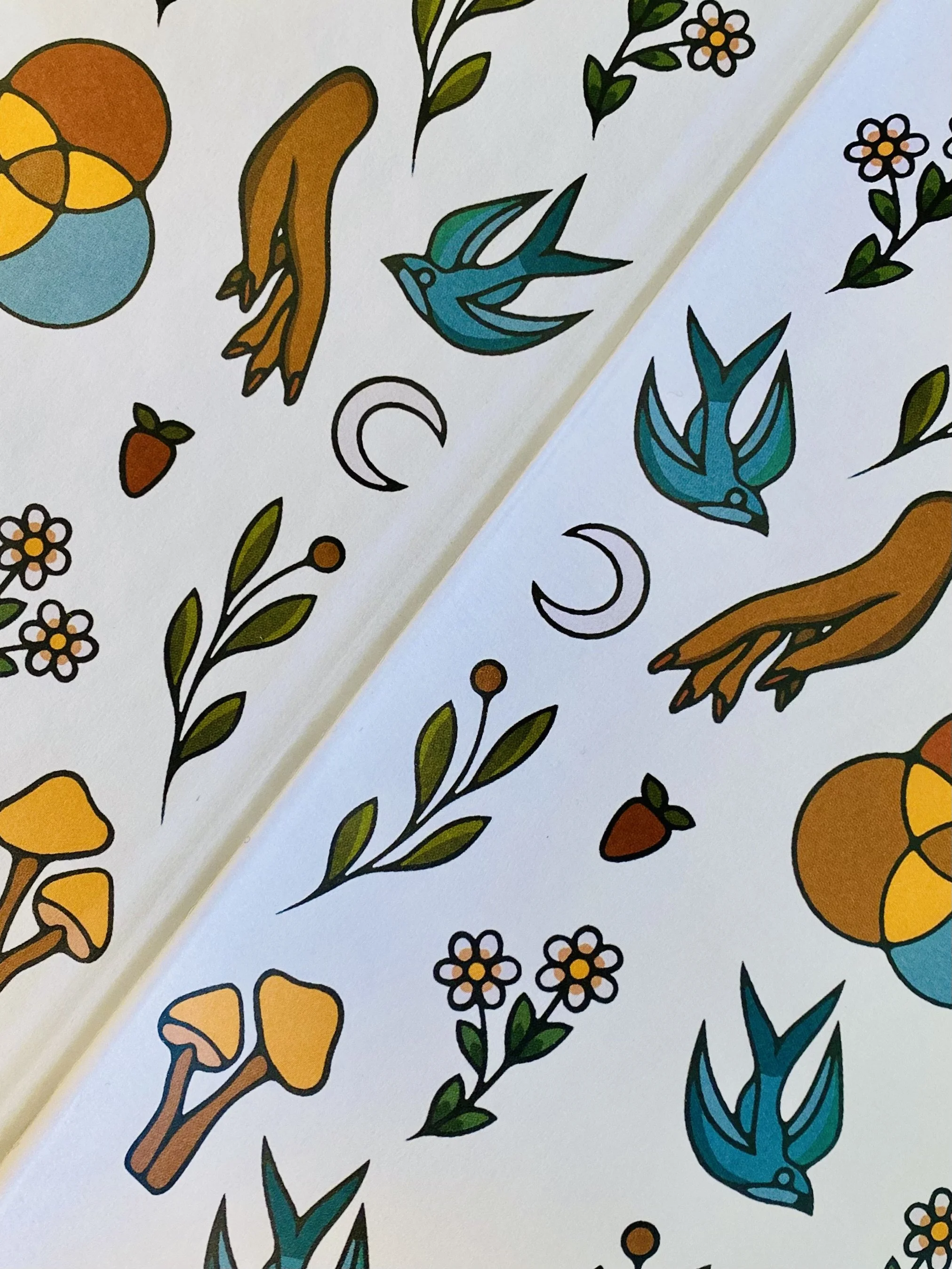This, Too: A Review of Living Resistance by Kaitlin B. Curtice
I have a distinct memory of sitting on the steps outside the nursery at the house where I nannied during seminary, laptop balanced on my lap, sprinting to edit and send that day’s newsletter for The Resistance Prays before the toddler woke up from his nap. There was some new egregious executive order or another display of cruel carelessness from people in power and I felt the burden of both needing to resist and needing to meet the expectations of my fellow writers, editors, and readers. I’m sure I had books to read, papers to write, relationships that could have used some attention, and meetings to prep for as I speed-scrolled through pictures to accompany the reflection. I wasn’t able to name this then, but I’ll name it for myself now: there had to be a better way than that.
Don’t get me wrong—I deeply value what I learned from those days. Seminary was a crucible, one that I’m sometimes surprised I made it out of, but I know that I am fundamentally changed for the better because of what I learned and experienced there, from 2016 to 2019. But, as we all could have guessed, the pace of learning and deconstructing and decolonizing and becoming more anti-racist and LGBTQIA+ affirming was too much. One minute you’re reminding yourself what emoluments are again and the next you’re revising a prayer to include more gender neutral language, and it’s all exhausting. I don’t say this to imply that the work isn’t important. It is. We have a whole world to reshape, and it’s important. But the way I took on that work just… wasn’t it.
That is why I am deeply thankful for Kaitlin Curtice’s new book, Living Resistance: An indigenous Vision for Seeking Wholeness Every Day.* This book transformed my understanding of resistance from a job I couldn’t quit to a way I can choose to be. Living Resistance did a gospel work on my soul: it called me into a better way of being, where the yoke is easy and the burden is light, while, at the same time, renewing my commitment to justice. As a United Methodist, I have committed myself to resisting evil, injustice, and oppression in whatever forms they present themselves, but it took reading this book for me to understand that resistance must be life-giving.
Curtice divides the work of resistance into four realms: the personal, the communal, the ancestral, and the integral. Each is paired with a color, a set of images, and a season, all beautifully portrayed by the cover art and the endpapers of the book. In an important way, the topics covered in each realm are specific to that realm and shift as the seasons do, from the quiet, contemplative inner work of winter to the sowing of spring and growth of summer through the harvesting of autumn. But as Curtice emphasizes throughout the book, these are not hard-and-fast boundaries. Resistance work is fluid. The book itself is not intended to be a framework but a vision for what a life lived in resistance might look like. When you read the book with that freedom of vision in mind, it opens itself up, as all good mystical texts do, and you find yourself called into the transformative work of resistance as practice, resistance as an everyday occurrence.
As a white person, I have struggled with practicing resistance. It’s so easy for me not to. Simply existing isn’t resistance for me the way it is for my BIPOC or LGBTQIA2S+ siblings. I have to dig deep to find the resistance written on my bones, the connection to the earth that my ancestors knew. There are so many layers that I have to cut through, so much that I have to shed, before I land on the core parts of me that are ready to practice solidarity. Being white (and Christian and a former quasi-evangelical and able-bodied and straight-passing and born with the gender I identify as) has, in an important way, cut me off from what Curtice identified as the ancestral realm. I don’t have a firm grasp on who my ancestors were (and I’m kinda afraid to). I don’t often imagine the generations to come (and I’m kinda afraid to). This has trapped me in a long, exhausting winter of the spirit, where I investigate what’s going on inside of me without the ability to reach beyond myself. Living Resistance named and explained that trap and provided me with a lifeline for getting out of it.
If you loved Braiding Sweetgrass by another Potawatomi author, Robin Wall Kimmerer, this book is for you. If you’re looking for a compendium of Black, brown, disabled, queer, and international voices to engage with, this book is for you. (Seriously, the footnotes are an entire library of resources.) If you’re longing for a better way to be in this world, honest to God, this book is for you. Read it chapter by chapter in community, working through the “resistance commitments” together. Read it by yourself and engage with the writing prompts. (Seriously. I hate writing prompts. I loved these.) Share this vision with those people in your life who you know care about people on the margins but don’t quite know what to do with that feeling. Living Resistance will help.
We do not have to tear ourselves apart fighting the injustice of this world. We can, instead, make ourselves whole and this, as Curtice reminds us over and over again, is also resistance.
Living Resistance endpaper art, by Oneida artist Alanah Astehtsi Otsistohkwa Jewell
*I am part of the Living Resistance review team, but all that means is that I got an advanced copy of the book and some extra reflections from the author. I am not getting paid for this. I just genuinely loved this book.


